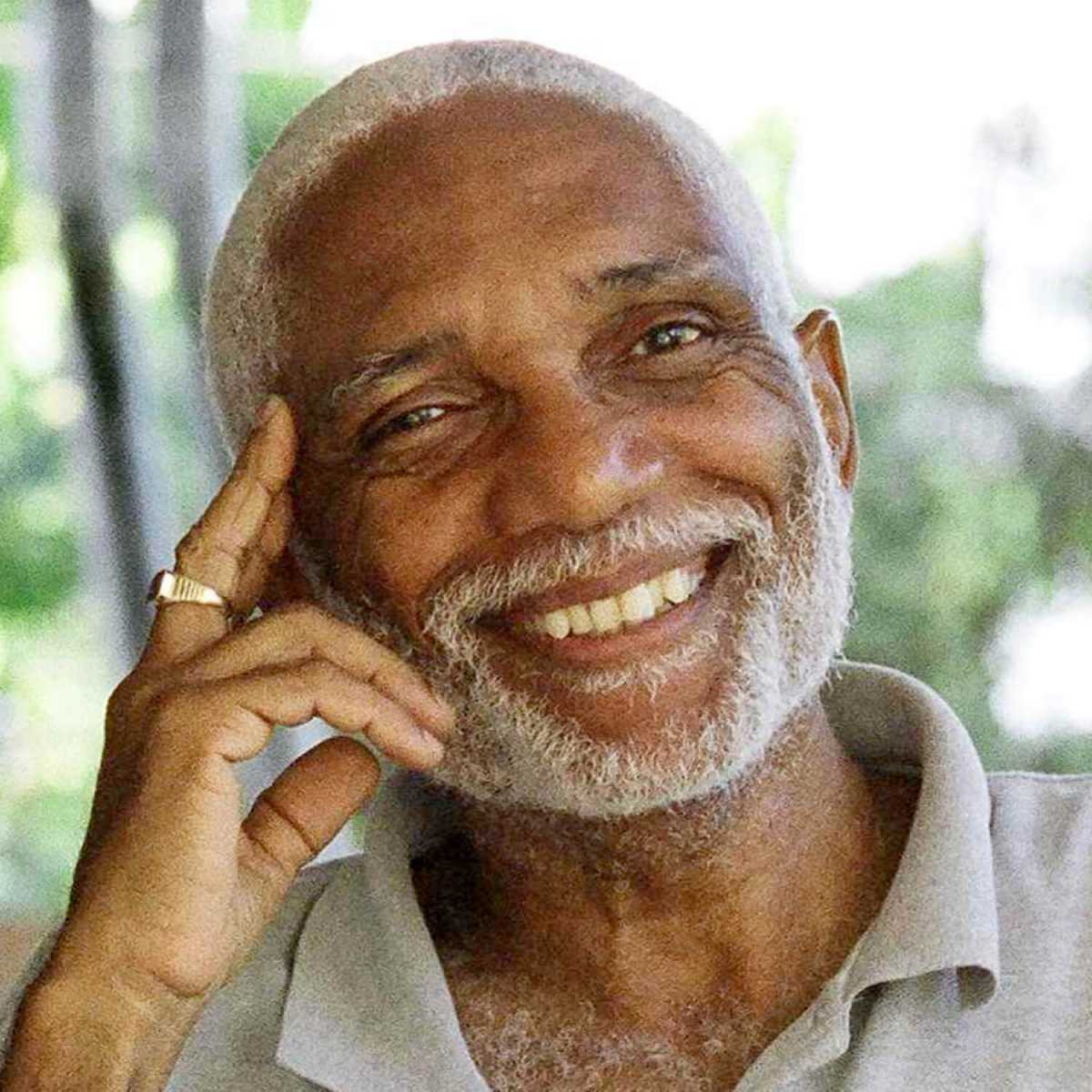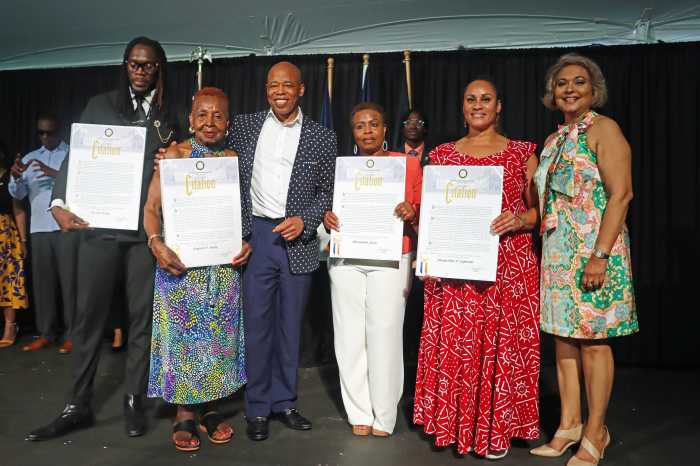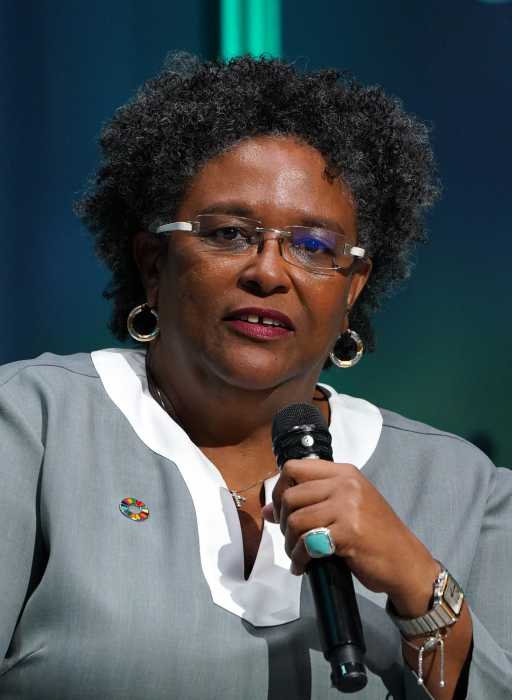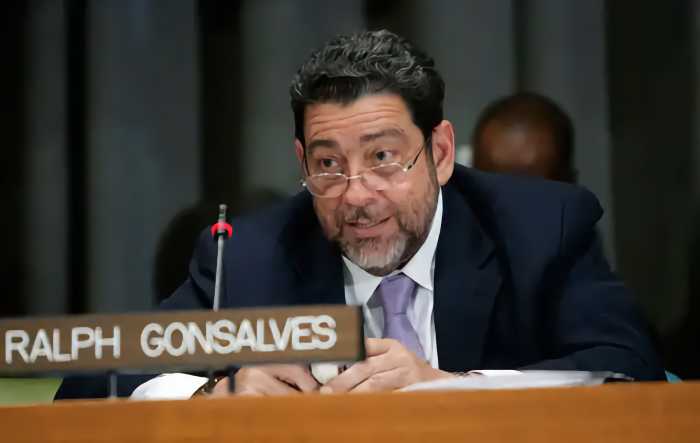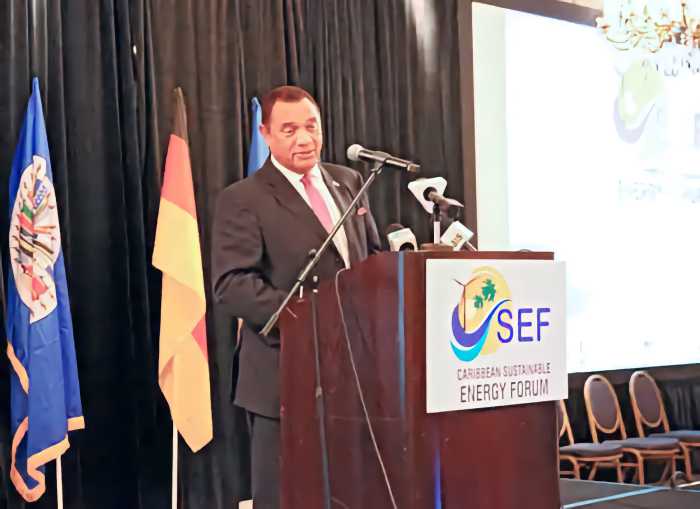Like white rum and molasses, St. Lucian poets Lisa Dublin, John Robert Lee and Vladimir Lucien performed on two giant screens to an in-person audience of SUNY Oneonta students and faculty on Tuesday, Oct. 26.
According to Dr. Robert Bensen — lecturer in English, SUNY-Oneonta and Professor Emeritus in English and Director of Writing (1978-2017), Hartwick College, Oneonta — Dublin, Lee and Lucien were joined online by audience from the Caribbean and the local community via the social media platform Microsoft TEAMS.
“The poets brought to this Upstate New York college their poetry in Caribbean English, the language that McDonald Dixon said was ‘thick to the ear like molasses, yet smooth on the tongue like a tang of white rum,’” Dr. Bensen told Caribbean Life on Friday.
He said the reading was designed to showcase St. Lucian poets in the post-Derek Walcott era.
“The late Nobel Laureate Sir Derek Walcott (KCSL OBE OCC) put the Caribbean on the map of world literature,” said Dr. Bensen, who was also the event organizer, “and opened possibilities for future generations of writers” through his fusing English and Caribbean traditions.
Walcott was a frequent visitor to Oneonta from 1979 until his death in 2017, Dr. Bensen said.
Beyond exploring Walcott’s influence, he said the Oct. 26 reading represented the Diaspora from the Caribbean to the US and Canada.
Dr. Bensen said Lee read from his home in Castries, St. Lucia, while Dublin was in Edmonton, Alberta, Canada, and Lucien joined from Brooklyn.
“The live-streamed reading took the pandemic and turned it into opportunity,” Bensn said. “Enjoying each other’s work and virtual company, the writers renewed their acquaintance and their bonds to their home island.”
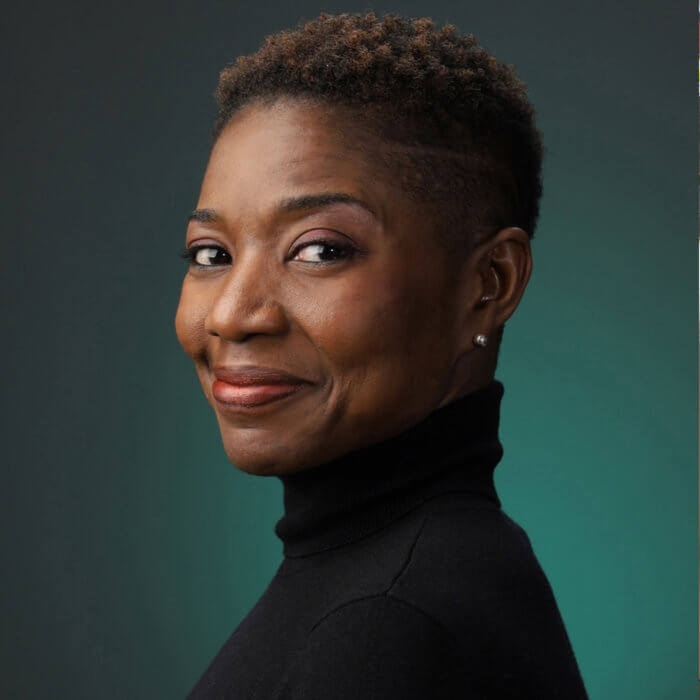
Dublin reflected that “it’s amazing how the virtual world brings you closer to home.
“Sitting under the sound of Robert Lee’s and Vladimir Lucien’s poetry, made me feel less in exile than I’ve felt in a long time,” she said. “It was not just the familiarity of seeing fellow St. Lucians, it was also the way in which the common themes of wonder, reckoning and woundedness weaved in and out of a common backdrop of home. This event brought us who live far apart together in a virtual homecoming.”
For Lucien, “it was a way of being home. To hear the voices, to see the faces, even to feel the affirmation of a sense of generations, continuity, connection across all kinds of borders and chaos.
“For us home is home,” he said. “Our islands send us off like mothers who know that there is something for us to learn out in the world. But the mother remains the mother, and in these times, when we are in need of spiritual refuge that we need her most. Times like now.
“As Lisa Dublin said, imagination became our borders — a challenge to create connection where it is ostensibly absent,” Lucien added. “Such connection came through the technology that enabled the writers to bring their portion of light, as Lorna Goodison would say, urged on by the mothering island that empowers us even from far away.”
Lucien won the 2015 OCM Bocas Prize for his first book “Sounding Ground.”
In his new work, he said he is “moving away from accurate observation as the basis of metaphor, less inclined to the absolute precision that our science is after.
“Something of my interest in texture allows me to read differently, dealing with what would, under another gaze, be considered imperfect, imprecise,” Lucien said.
“His poems were incantations, made of melodic phrasings and variations, rhapsodies of feelings that arise in the erotic, the physical encounter, the multifaceted acts of living,” Dr. Bensen said.
Introducing his poem “Heavy Weight, Body Light,” Lucien emphasized that he wrote the poem “while running,” an accomplishment the audience recognized with applause and laughter.
“’Uses of the Erotic’ followed the breath and rhythms of lovemaking in the physical and deepening spiritual merging of lovers,” Dr. Bensen said.
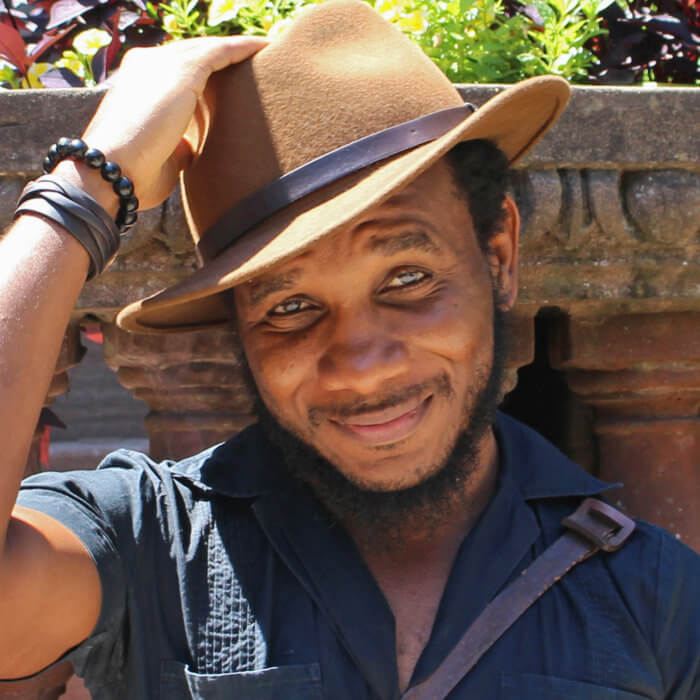
Dublin hosts an inspirational video blog, Basement Chronicles, where she explores the intersection of race, womanhood, Christianity and personal authenticity.
She said that her poetry tries to “reckon with race” in the aftermath of George Floyd’s murder.
She discussed growing up in racially homogenous St. Lucia before moving to Canada, where Black people occupy fewer positions of leadership.
Her first poem was about microaggressions that, as a Black woman, she encountered in a shopping mall.
In her poem “What Will We Do?” she addressed the murder of George Floyd, “whose breath being cut off gives voice to a much bigger voice and a bigger cause.”
In “Island Girl,” Dublin reacted to being “racialized” (the term used in Canada), coming from an island “where mountains are close as family,” where “I was visible and the majority,” to a country that tries to define her as a “visible and, thus, invisible minority.”
Dublin dedicated “To All the Girls” to “everyone who dares to be a woman, which just ent easy.”
Lee is the author of 15 books of poetry and scores of short stories, essays, plays and reviews.
Dr. Bensen said Lee’s reading began with “Lusca,” dedicated to Walcott, his late friend and mentor.
“The poem gave the student audience a taste of St. Lucian folklore in the voice of a young man from town who loves a woman from the country,” Bensen said.
His “Madonna of Port-au-Prince” grieved for Haiti, personified in the photograph (by Daniel Morel) of a woman trapped in rubble after the January 2010 earthquake.
Lee also read “Doors,” which depicts the contemporary Caribbean through entering and exiting houses through weathered doors, such as those in a composite photograph by Cory Scott, Bensen said.
He said the St. Lucian government’s destruction of a 200-year-old prison in Castries, the St. Lucian capital, angered Lee and inspired him to write “Ikons,” an apocalyptic poem based on drawings made by prisoners on the walls that were destroyed.
Speaking from his home in Castries, Lee expressed his appreciation for the two younger poets, Dublin and Lucien, “whose work I have admired and from whom I learn much as they search themes and shape poem structures that are rooted in their generation.
“Their work feeds into my own continuing explorations of our lives in the Caribbean and wider worlds,” Lee said. “It was a pleasure to share the SUNY Oneonta’s Red Dragon Reading Series virtual stage with them and to listen to their new work, creative, bold, crossing ‘boundaries of imagination,’ their voices making poetry, music and statement fearlessly, out of the Diasporic cultures in which they move now.”
SUNY Oneonta said on its website that it is a mid-size, four-year, public college that offers “small classes, loads of activities, opportunities for undergraduate research, student/faculty interaction and an attractive cost of attendance.
“Nestled in the hills of Central New York, the college’s idyllic setting is ideal for study, adventure and self-discovery,” it said. “Just ‘up the hill’ from the charming City of Oneonta, our campus and the surrounding community engages, nurtures, and inspires.
“Caring is our longest-standing tradition, traced all the way back to the school’s founding in the late 1800s,” SUNY Oneonta added. “Today, our growing alumni network spans the globe, advancing the values of inclusivity, service and sustainability that exemplify SUNY Oneonta.”


